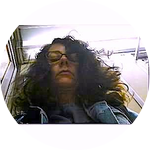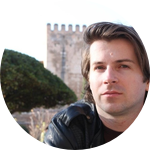About This Project
A connectome is a map of the network of neural pathways in a brain - and everybody's is unique. In many ways, you ARE your connectome. Until recently, no one has had the ability to map it. With your connectome in hand, you can do awesome things - like own a handy backup of your brain. Happily, technologies are beginning to be developed to do this amazing task. Brain Backups is developing innovative, novel, and exciting technologies to do this very thing! Wouldn't you like to have a Brain Backup?
Ask the Scientists
Join The DiscussionWhat is the context of this research?
The brain is a fascinating biological machine, capable of tasks which have not yet been possible to replicate by any engineering efforts. How did something this complex emerge? How does it store information so reliably? How does it use its information to make judgements? Questions like these underlie our fascination with the brain, and to begin to address these questions requires data from the brain's layout itself. That data is the connectome. The connectome allows us to begin to see how the brain is both wired and organized, how the information it contains is stored and protected, and how it "talks" both to itself and to the external world.
Our longest-range goal is to map individual connectomes so you can backup yourself. Welcome to the future.
What is the significance of this project?
Mapping the connectome is a first step towards curing many diseases and health issues involving injury to the brain. This includes Alzheimer's Disease (a variant of this is now believed to be the cause of Robin William's death), Parkinson’s Disease (PD), dementia, coma, stroke, memory loss due to traumatic brain injuries, concussion, anoxia, hypothermia or even normal age-related memory loss.
When connectomic information is readily available, technologies we are developing will allow recovery of functional brain circuits from individuals. From a known connectome other information would be recoverable as well, including memory pathways that may have been damaged, attenuated, mislabelled, or are otherwise unrecoverable.
What are the goals of the project?
We will study assemblies of virtual and actual neurons, ranging in size from 300 to 500,000 cells. These generate patterns which we will characterize. Recognition of robust motifs in the dataset will help identify characteristics of the overall connectome.
Current neuronal models add up synaptic input to reach a firing threshold for each neuron. We know that's not the whole story - significant local computations also occur at the dendritic spines, far from the axonal hillock. Therefore, existing models are incomplete.
Our parameterized paradigm is a novel approach in this area of theoretical neuroscience. Starting with our model equation, we will derive parameters empirically. This completely new model will be open-source, revolutionizing theoretical neuroscience.
Budget
We will grow small, naive biological neural networks (BNN) in vitro to visualize and understand the behavior of neural assemblies of various sizes. These BNNs show characteristic patterns. Knowledge and characterization of these patterns, the dynamic formation of which underlie all thought and consciousness, are a part of understanding how the connectome is...well, connected! We will determine, using machine learning techniques, what patterns are found most commonly, and why. The consensus patterns we find will underlie our development of a Neural Code Database.
We will also use computational models to simulate the behavior of same small neural networks, and compare these models to our BNN's to be sure our models represent our empirical observations of the real biological neural networks.
Endorsed by
Meet the Team
Team Bio
We are working to understand how information is encoded and preserved through time and space by mammalian brains. As this information quite literally is YOU, what could be more interesting than discovering and preserving the essence of individual humanity?
When we are not discovering what makes brains tick, we are designing and navigating drones, building robots, or hoisting flooring to create a temporary office. Sometimes we hack a raspberry pi or do some silversmithing.
Regina R. Monaco
Regina R. Monaco, Ph.D. is the Chief Scientific Officer at Brain Backups LLC, and is a Research Scientist at Mount Sinai Medical Center. She was an Aaron Diamond Fellow and a Santa Fe Steinmetz Fellow in Complex Systems. Her original research has been published in books and journals, including PNAS, JACS, and The Journal of Protein Chemistry (publications here).
Her research is in the robust conservation and propagatinon of generational biological information and she has studied storage and fidelity mechanisms for such systems. Current work is in the the highly data-intense and fascinating question of how information is stored in networks of neurons.
Follow her on Twitter @BrainBackups
Russell Hanson
Russell is the founder and CEO of Brain Backups LLC. As founder and CEO he has been working on the vision for usable connectomic data, the $1000 connectome, and how to make this wealth of human medical and neurological data useful and interesting. He has assembled a multi-disciplinary team including computational chemists and synthetic biologists to attack this problem using tools and engineering that are outside the traditional neuroscience toolbox.
Project Backers
- 6Backers
- 2%Funded
- $59Total Donations
- $9.83Average Donation


